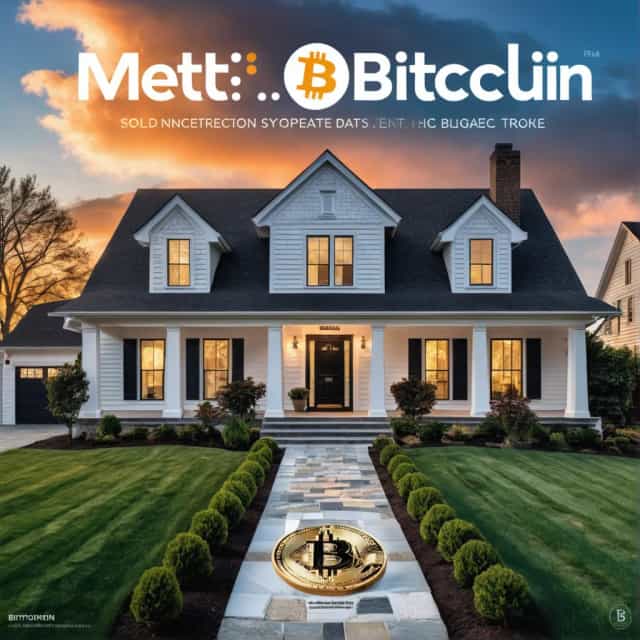
Image source: Block Media
USDN and Composable Yield: The Dawn of 3rd-Generation Stablecoins
Stablecoins have undergone significant evolution since their inception, transitioning from payment-focused tokens like USDC and USDT to yield-bearing models that generate passive income. Now, the industry is preparing for another leap forward with USDN, a pioneering 3rd-generation stablecoin introducing Composable Yield. This paradigm focuses on maximized programmability and developer autonomy, setting the stage for a new era of digital financial systems.
The Rise of Yield-Bearing Stablecoins and Their Challenges
The stablecoin market, fueled by 1st-generation tokens such as USDC and USDT, has grown to exceed $240 billion in market capitalization. While these payment-oriented tokens laid the groundwork, the arrival of 2nd-generation stablecoins introduced yield-bearing capabilities—distributing interest from investments like U.S. Treasury bills or delta hedging back to users. This innovation skyrocketed the market for yield-bearing stablecoins to approximately $9 billion, enabling passive income generation and boosting capital efficiency in decentralized finance (DeFi).
Despite their utility, existing yield-bearing stablecoins face critical limitations:
- Centralized Control: Issuers dominate yield flows, often requiring platforms to develop custom smart contracts or execute manual claims to access interest streams.
- Restricted Programmability: Limited flexibility hinders integration into decentralized protocols, stifling composability and innovation.
- Issuer Dependence: Protocols are forced to rely on issuer-designed systems, reducing developer autonomy.
USDN offers solutions to these challenges through its composable infrastructure.
USDN: Redefining Stablecoins with Composable Yield
USDN, developed by Noble, aims to introduce a transformative stablecoin model through Composable Yield mechanisms. Unlike traditional yield-bearing stablecoins, USDN enables integrated protocols and platforms to autonomously design and manage yield distribution. Through smart contract capabilities, developers can allocate interest flows directly to addresses or contracts of their choice, eliminating dependency on intermediaries.
Noble’s Role in the Ecosystem
Noble operates as an appchain within the Cosmos IBC ecosystem, designed for seamless native asset issuance. Previously reliant on bridging solutions for USDC accessibility, Noble’s infrastructure now supports direct interoperability through IBC and CCTP (Cross-Chain Transfer Protocol). This allows asset flow across Cosmos chains such as Osmosis, Neutron, and dYdX. To date, Noble has facilitated over $19.3 billion in total transaction volume and issued approximately $365 million in USDC.
Looking ahead, Noble plans to expand through the Noble AppLayer, an EVM-compatible rollup, leveraging Celestia’s modular architecture. This framework will empower decentralized applications requiring native stablecoin liquidity, with USDN positioned as the anchor stablecoin for cross-chain liquidity and blue-chip DeFi projects on Ethereum.
USDN’s Core Features and Feedback Loop
USDN is designed to excel in stability, usability, and programmability through the following attributes:
- Robust Stability: The stablecoin maintains a $1 peg with collateral exceeding 102% of circulating supply, ensuring resilience and risk mitigation.
- Automatic Yield Distribution: USDN holders earn approximately 4% annualized returns without staking or locking tokens, as interest from U.S. Treasury-backed collateral is automatically distributed.
- Programmable Composable Yield: Developers have full control over yield flows, allowing tailored integrations into DeFi protocols.
USDN’s collateral management is powered by the M0 Protocol—a stablecoin architecture focused on uniform collateral and regulatory compliance—ensuring seamless issuance while allowing customization.
USDN’s Composable Yield in Action
Composable Yield is USDN’s groundbreaking feature, directly addressing the inherent limitations of centralized yield-bearing stablecoins. With traditional models, yields are locked within issuer vaults, requiring manual intervention for distribution. USDN removes these barriers, granting protocols control over yield allocation with automated functionality.
Examples of how Composable Yield transforms user interactions include:
- Automatic yield deposits into liquidity pools.
- Yield-driven DAO treasury funding.
- Programmatic token buybacks fueled by interest streams.
Using IBC or Hyperlane routing, USDN allocates yields according to chain-level balances, streamlining processes without requiring manual intervention. This ecosystem-centric flexibility fosters seamless composability within DeFi and beyond.
Real-World Integration Case Studies
Early adopters are already leveraging USDN’s capabilities for innovative financial applications:
- Namada: Plans to channel USDN yield into Shielded Pool liquidity, combining privacy with passive income generation.
- Osmosis: Exploring USDN integration with USDC to create diversified yield-bearing assets that fund liquidity incentives.
- Neutron: Considering yield-driven treasury funding for ecosystem expansion.
- Cosmos Hub: Evaluating USDN’s potential for enhancing ATOM’s utility through staking reward distribution or token buybacks.
These implementations highlight USDN’s versatility and its ability to unlock new opportunities across decentralized networks.
Developer Sovereignty: The Key to Unlocking Stablecoin Innovation
USDN advocates for developer sovereignty, enabling unrestricted composability at the yield layer—critical for driving innovation. Current yield-bearing stablecoin models concentrate control within issuer frameworks, limiting ecosystem growth. USDN seeks to emulate the success of modular crypto systems such as:
- Cosmos SDK: Facilitates appchain modularity.
- Ethereum ERC Standards: Drives smart contract interoperability.
- Uniswap v4 Hooks: Enables customizable liquidity pools.
- Morpho Blue: Innovates modular money markets.
By offering similar composability at the yield layer, USDN is poised to catalyze sustainable innovation across DeFi protocols and financial primitives.
Aligning Ecosystem Incentives
USDN aligns the interests of issuers, developers, and users by incentivizing stablecoin adoption. Integrated chains benefit from recurring automated yields, generating reasons to promote USDN usage, which ultimately supports Noble’s growth. Furthermore, the rollout of Noble’s AppLayer enhances compatibility with Ethereum’s DeFi ecosystem, facilitating use cases across IBC and EVM chains.
As adoption scales, USDN’s composable yield model shows promise in industries beyond DeFi, including payment systems, remittance services, and loyalty programs.
USDN: Ushering in the Age of 3rd-Generation Stablecoins
USDN represents a monumental leap beyond 1st-generation payment-focused stablecoins and 2nd-generation yield-bearing models. By integrating programmability, composability, and developer sovereignty, USDN positions itself as a financial primitive capable of revolutionizing stablecoin dynamics. As interest in its Composable Yield model grows, USDN is likely to shape the future of Money Lego innovation and solidify its role within the broader crypto ecosystem. This evolution merits attention as the stablecoin market enters its next transformative phase.










